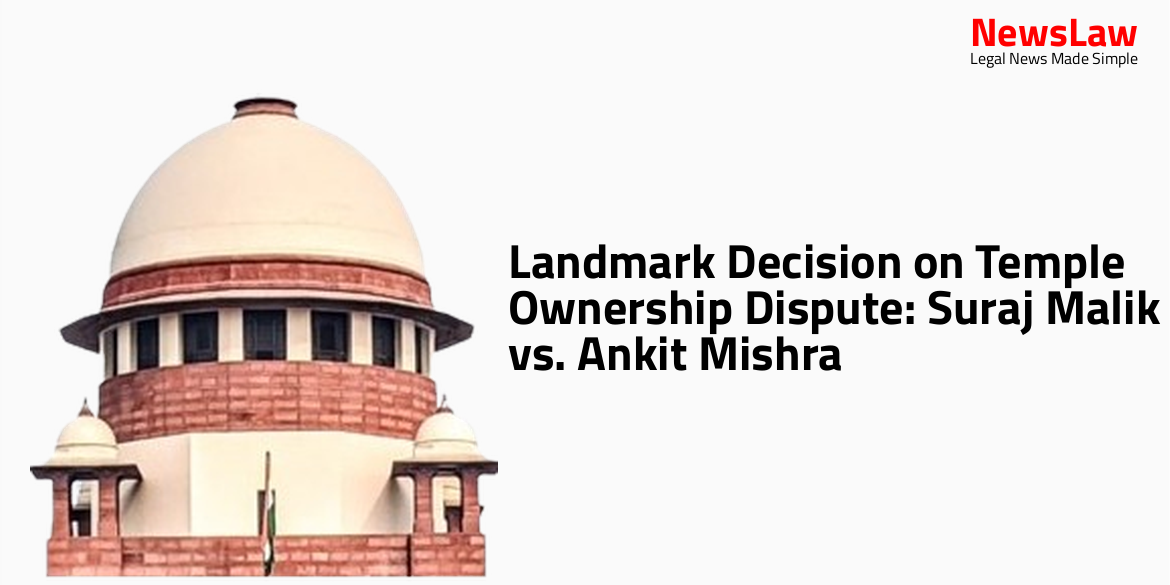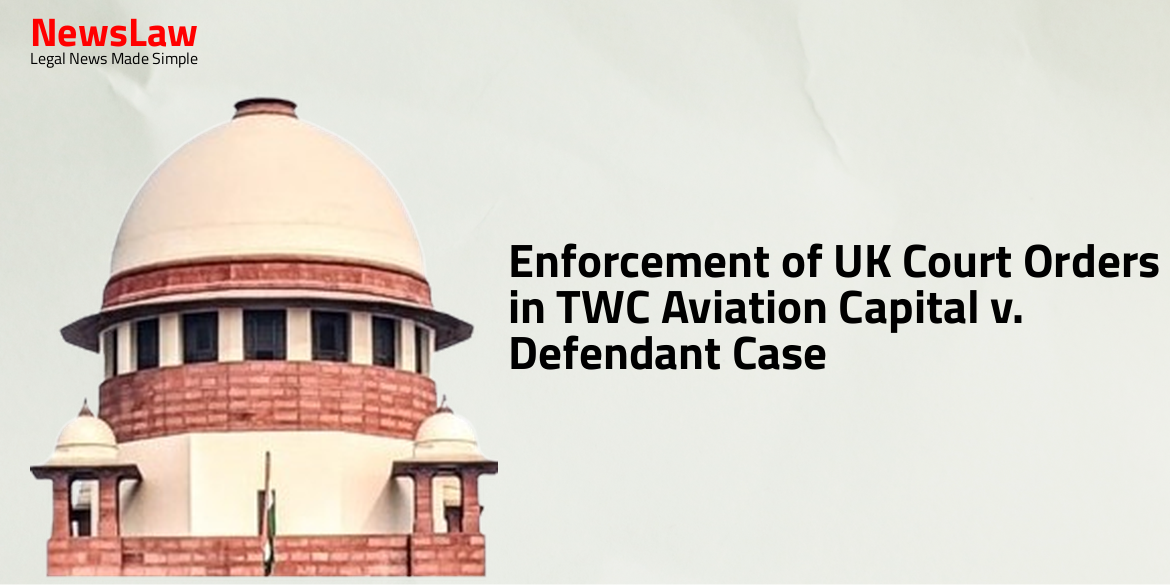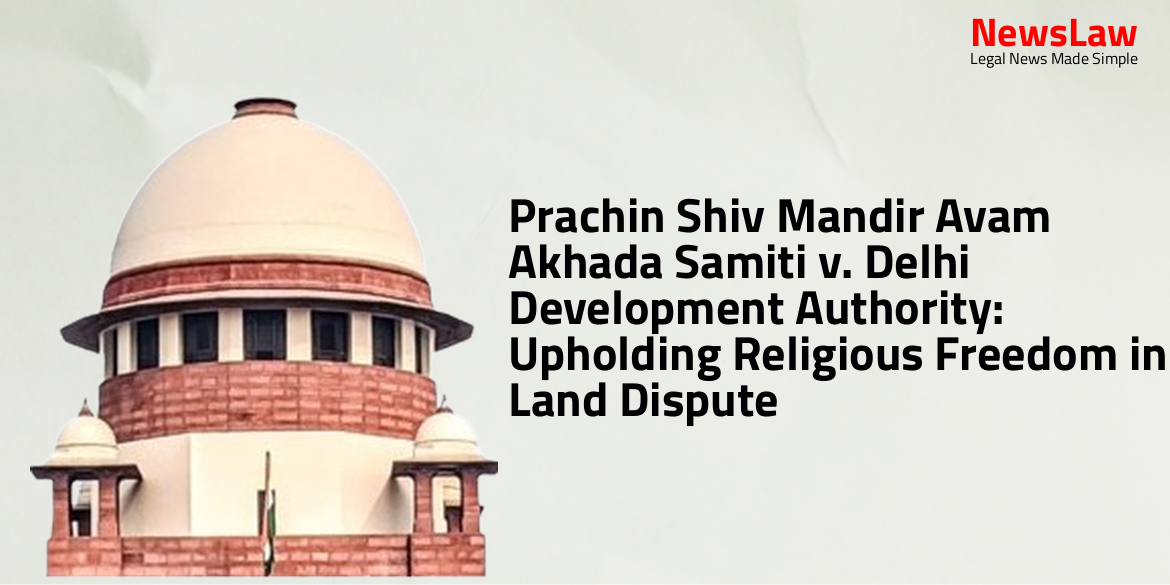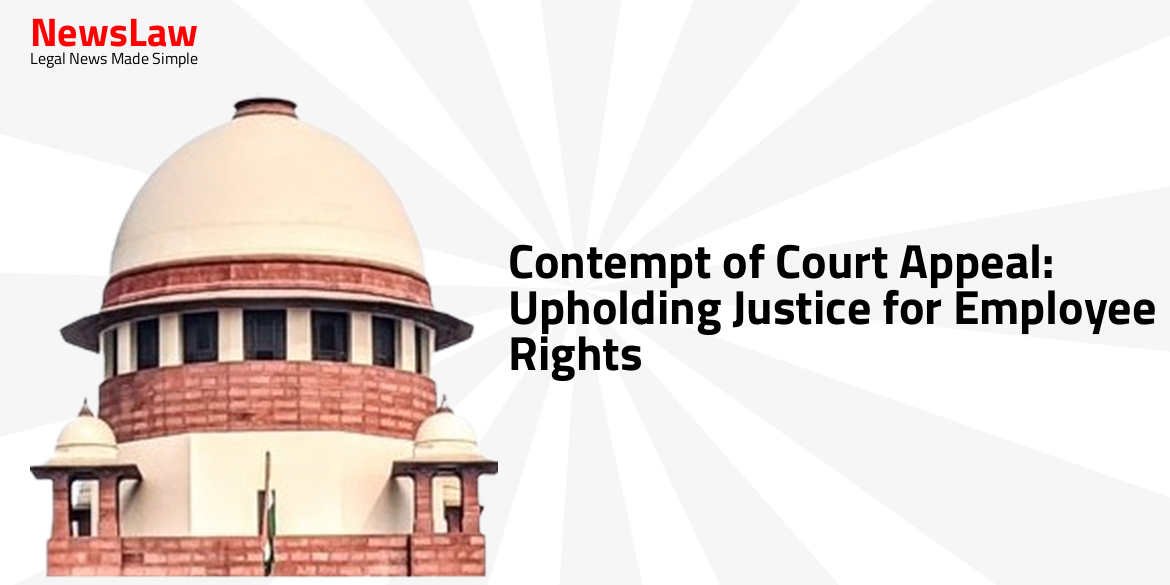In a significant legal battle over temple ownership, the Delhi High Court delivered a landmark judgement in the case of Suraj Malik vs. Ankit Mishra. The dispute revolves around the rightful ownership of a temple, raising questions about private vs. public temple status. This summary provides insights into the court’s decision and the arguments presented by the parties involved.
Facts
- Ankit Mishra and other plaintiffs sought a declaration to perform worship at the temple located on the suit property.
- Santosh Sharma and her children claimed ownership by adverse possession since 2000.
- An objection petition was filed against the fraudulent Civil Suit (CS 642/2019) seeking recovery of possession of the property with a wrongfully obtained settlement decree.
- The property was said to be vested in the applicant and other deities present in the temple, therefore, could not be transferred by the non-applicants.
- Suraj Malik filed for execution of the decree in 2023, claiming ownership of the suit property.
Arguments
- The objection petition was filed by the appellant in an attempt to derail the execution process.
- Suraj Malik strongly opposed the objections of the appellant and presented legal documents to support his claim to the suit property.
- Mr. Grover argued that if a private temple becomes a public temple over time, the land on which it is situated vests in the presiding deity.
- Respondents alleged fraud by the Decree Holder in obtaining the judgment.
- The objection petition was deemed lacking in bona fides and filed after significant delays following the dismissal of a related civil suit.
- Suraj Malik denied the claims of the appellant regarding the temple’s origins and ownership.
- The objection petition was ultimately dismissed by the learned ADJ on various grounds including lack of locus standi and untimely filing.
- Mr. Grover argues that the issues raised in the objection petition deserved consideration and could not have been summarily dismissed.
- Despite being served with advance notice of the appeal, Respondents 1 to 4 did not appear.
- Reference is made to a decision in Bala Shankar Maha Shanker Bhattjee v. State of Gujarat regarding the status of a private temple turning into a public temple.
- Mr. Grover suggests treating the petitioner as one preferred Shreenath even if Section 47 of the CPC was inadvertently invoked.
- The case is highlighted as a collusion with the intention to grab the property and frustrate Suraj Malik’s attempt to regain possession.
- The response from Respondents 1 to 4 to the objection petition indicates active collusion with the appellant in obstructing the execution of the decree.
- Evidence presented by the plaintiffs is examined in light of court tests for determining a public temple status.
- Reference is made to the Supreme Court ruling in Sree Panimoola Devi Temple v. Bhuvanachandran Pillai regarding the acquisition of a public temple status over time.
Analysis
- Section 47 of the CPC applies to determine questions between parties relating to the execution, discharge, or satisfaction of a decree.
- The primary distinction between private and public temples lies in the beneficiaries, with private temples benefiting specific individuals, while public temples benefit the general public.
- The purpose and management of the temple, as well as the rights exercised by devotees, determine whether a temple is public or private.
- The Court must ensure that objections during execution are genuine and not an abuse of process to delay the decree holder from availing the decree’s benefits.
- The onus is on the objectors to prove the evolution of a private temple into a public one over time.
- The Court should refrain from entertaining issues during execution that could have been raised during the original suit.
- Public worship at a private temple does not automatically convert it into a public temple unless certain criteria indicating public access rights are met.
- In cases of lost or ancient endowments, determination of public or private status relies on circumstantial evidence regarding worship practices.
- The Court must prevent the abuse of law through frivolous objections that hinder the restoration of possession to the rightful owner.
- Issuing fresh notices for objections in execution can lead to unnecessary delays and further litigation, contrary to the purpose of the Code of Civil Procedure.
- The income received by the Mahant was primarily used for temple expenses and to support the Mahant’s family.
- Worshippers bring offerings to the temple, giving repute to the idol; they are not turned away under threat of forfeiture of temple property.
- In Narayan Bhagwant Rao Gosavi Balajiwale v. Gopal Vinayak Gosavi, the court held that specific factors indicated a public nature for the temple.
- The onus of proving a temple as public lies on the assertor; court must consider evidence in a non-mechanical manner.
- In Mahant Ram Saroop Dasji v. S.P. Sahi, it was clarified that private religious trusts for family idols may not involve public interest.
- Recommendation for amendments in Code of Civil Procedure to ensure continuous adjudication from initiation to securing relief.
- Evidence of long-standing public use and land/cash grants may indicate public nature of temple; not solely based on public attendance.
- The fact that the public visits a temple freely does not automatically categorize it as a public temple; dedication to the public needs more substantiation.
- The worship of a deity post-installation does not solely determine the endowment’s nature; public use ‘as of right’ may establish public endowment.
- Observations from various cases and principles highlight the importance of right public use, temporal control, and distinguish between private and public endowments.
- Section 60 CPC should be interpreted liberally to include any person from whom the judgment-debtor may derive share, profit, or property.
- All necessary parties should be added to the suit to avoid multiple proceedings and to join causes of action in the same suit.
- A custodia legis should be appointed to monitor the property in question for proper adjudication.
- Decrees for delivery of possession should have clear descriptions of the property and consider its status.
- Immediate execution of decrees for payment of money can be done on oral application under Rule 11.
- Defendants in money suits may be required to disclose assets on oath before settlement of issues.
- The court may demand security at any stage to ensure decree satisfaction.
- Decrees for immovable property delivery should be executed promptly, removing any resistant parties if necessary.
- Courts must follow directions to disclose and produce documents in possession, appoint commissioners for property assessment, and impose compensatory costs for frivolous objections.
- The suit property has been restored to Suraj Malik with the interference of the Court.
- Appellant 1 is required to pay costs of ₹1 lakh to Suraj Malik.
- The appellants misusing the judicial process could have resulted in higher costs.
- Ankit Mishra is liable to pay costs as well.
- The lenient stance on costs is due to Suraj Malik not facing the burden of a fresh trial.
Decision
- The appeal is dismissed in limine with costs of ₹1 lakh to be paid by Ankit Mishra to Suraj Malik.
- The costs are to be paid within four weeks by means of a crossed cheque or demand draft deposited in the registry favoring Suraj Malik.
- Suraj Malik is entitled to withdraw the cheque or demand draft upon deposit.
- The contention that costs had to be shared by Lord Hanuman is clarified as the costs are entirely payable by him.
Case Title: ANKIT MISHRA & ANR. Vs. SANTOSH SHARMA & ORS. (2024:DHC:3610)
Case Number: EX.F.A.-42/2023



